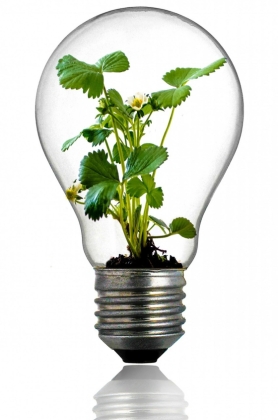The Worlds First Bio-Powered Bulb Is Revealed
<span>There are numerous different types of light bulb which are ubiquitous in homes and businesses across the nation today, including incandescent bulbs, fluorescent bulbs, LED light bulbs, and more. Bu...span>

There are numerous different types of light bulb which are ubiquitous in homes and businesses across the nation today, including incandescent bulbs, fluorescent bulbs, LED light bulbs and more. But could you see yourself installing a biological bulb in your house or company premises? Three students from Wisconsin have recently revealed their \biobulb; a bulb which harbours living, light-emitting bacteria and uses it to create illumination. Dramatically different from any bulbs on the market today, the students are currently trying to secure crowdfunding in order to their project further.
Steven Ellwood, Managing Director of BLT Direct, one of the UK's most prominent suppliers of light bulbs for homes and businesses, says, "Lighting solutions are right at the forefront of scientific advances for many, and this is proved once more with the creation of this biobulb by a group of talented undergraduates. Though implementing the biologically-powered bulbs in homes might not be a viable option in the near future, the discovery proves that there are a great number of innovations to be made in the world of light bulbs."
According to the leading of the student team, Michael Zaiken, the biobulb is essentially a closed ecosystem within a jar. There are several species of microorganism within, with each playing a vital role in recycling different nutrients. A loop of DNA is then inserted into E. coli which allows the bacteria to become luminescent, just like fireflies and jellyfish. The bulb requires no electricity and should theoretically be able to glow and recharge repeatedly for days, or perhaps even months. The ecosystem within can function entirely independently, and would in the future make a perfect solution for homes and businesses attempting to move away from conventional electricity and power methods.
The current light bulb solution requires some slight fine tuning in its most crude form; from finding the best genes to insert, to studying the best kit ingredients and how to take care of the miniature ecosystem, there are a great number of challenges faced by those who dreamed up the innovation. The students also need to establish a way to keep the injected DNA within the ecosystem, even after the cells replicate in their own circle of life. The team are considering a number of strategies and are searching for crowdfunding on an internet platform in order to help them hone their project and give it a real shot at being a viable lighting solution.
The bulb demonstrates without question that the lighting industry still has plenty of ground to explore with regards to their power options, as people move away from the traditional power-guzzling halogen options for more energy-efficient alternatives.
